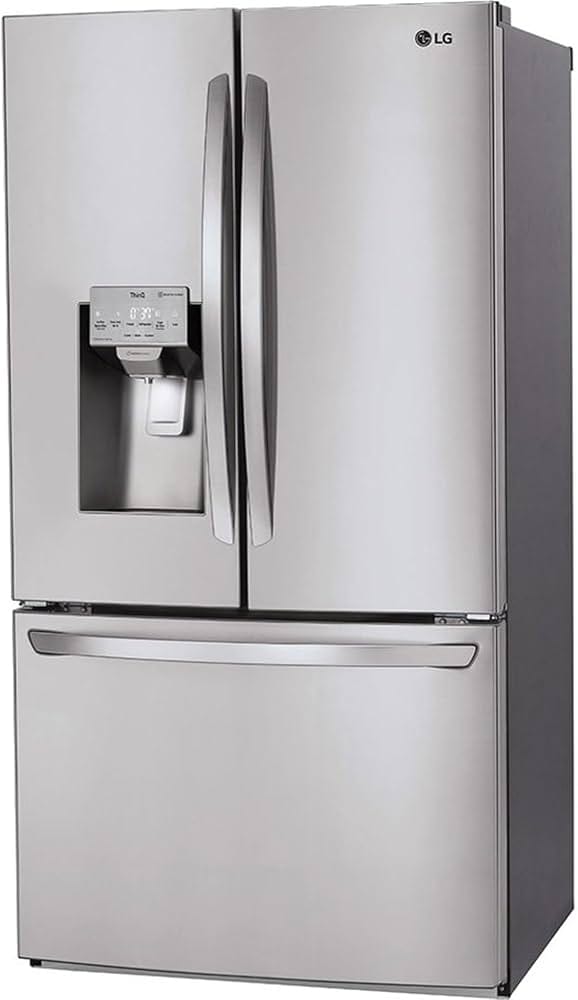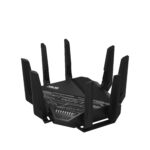LG refrigerators are known for their advanced features and modern design. These appliances offer cutting-edge technology to keep food fresh and beverages cold. Despite their high-quality construction, LG refrigerators can sometimes experience issues that affect their performance.
Common problems with LG refrigerators include temperature inconsistencies, unusual noises, water dispenser malfunctions, freezer cooling issues, and ice maker failures. Many of these issues can be troubleshooted at home, saving time and potentially avoiding costly repairs. For more complex problems, professional technicians can provide expert assistance to restore the appliance to proper working order.
Troubleshooting Common LG Refrigerator Issues
Common LG Refrigerator Problems
LG refrigerators, known for their innovative features, can sometimes experience issues. Understanding these common problems can save you time and money on repairs. Here are some frequent concerns:
Cooling Problems
A common complaint is insufficient cooling. This can stem from several causes, including:
- Dirty Condenser Coils: Dust and debris on the coils reduce their ability to release heat.
- Faulty Condenser Fan Motor: This fan blows air across the condenser coils. A malfunctioning motor hinders cooling.
- Damaged Evaporator Fan Motor: This circulates air over the evaporator coils. Problems here affect cooling inside the fridge.
- Refrigerant Leaks: Low refrigerant levels directly impact cooling performance.
Ice Maker Issues
Ice maker problems are also frequent. Look out for:
- Frozen Water Lines: This prevents water from reaching the ice maker.
- Faulty Water Inlet Valve: This valve controls water flow to the ice maker. A broken valve stops ice production.
- Broken Ice Maker Assembly: The entire unit may need replacement if internal parts fail.
Water Dispenser Problems
If your water dispenser isn’t working, check:
- Frozen Water Lines: Similar to ice makers, frozen lines block water flow.
- Faulty Water Inlet Valve: A malfunctioning valve restricts water supply.
- Water Filter Issues: A clogged filter reduces water pressure.
Other Potential Problems
- Error Codes: LG fridges often display error codes. Consult your user manual or LG’s website for code meanings.
- Unusual Noises: Grinding or clicking sounds may indicate a problem with a fan motor or compressor.
- Water Leaks: Leaks can come from a blocked defrost drain or damaged water lines.
Troubleshooting and Repair Tips
Before calling a technician, try these simple fixes:
- Clean Condenser Coils: Unplug the fridge and use a vacuum cleaner or brush to remove dust.
- Check Vents: Make sure air vents inside the fridge aren’t blocked by food items.
- Reset the Fridge: Unplug it for a few minutes and then plug it back in.
- Replace the Water Filter: This is a routine maintenance task that improves water flow and quality.
If these steps don’t resolve the issue, it’s best to contact a qualified appliance repair technician or LG customer service.
LG Refrigerator Problem Checklist
| Problem | Possible Cause | Troubleshooting Step |
|---|---|---|
| Not Cooling | Dirty condenser coils, faulty fan motor, refrigerant leak | Clean coils, check fans, call technician for refrigerant issues |
| No Ice | Frozen water line, faulty water inlet valve, broken ice maker | Check water lines, test valve, consider ice maker replacement |
| No Water from Dispenser | Frozen water line, faulty water inlet valve, clogged filter | Check water lines, test valve, replace filter |
| Error Code Displayed | Various internal issues | Consult user manual or LG website for code information |
Key Takeaways
- LG refrigerators may experience various issues affecting cooling and functionality
- Many common problems can be resolved through basic troubleshooting steps
- Professional repair services are available for more complex refrigerator issues
Common LG Refrigerator Issues and Solutions
Refrigerators are essential for preserving food and preventing spoilage. LG refrigerators, while usually reliable, can experience occasional issues. By knowing common problems and basic troubleshooting steps, homeowners can often fix minor issues themselves, saving time and repair costs. This knowledge helps consumers maintain their appliances and make informed repair decisions.
1. Uneven Cooling Performance
LG refrigerators may experience temperature fluctuations. This can lead to food spoilage or freezing in certain areas. Possible causes include:
- Incorrect temperature settings
- Faulty temperature control thermostat
- Dirty condenser coils
- Malfunctioning fan motors
- Defective control boards
- Linear compressor problems
To address this:
- Check and adjust temperature settings
- Clean condenser coils
- Ensure proper airflow around food items
- Test the thermostat and replace if necessary
If issues persist, professional diagnosis may be required.
2. Unusual Noises from LG Fridges
Strange sounds from your LG refrigerator can be concerning. Common noises include:
- Humming
- Rattling
- Grinding
- Squealing
These noises often stem from:
- Loose fan blades
- Worn evaporator or condenser fan motors
- Compressor issues
- Faulty water inlet valves
To reduce noise:
- Level the refrigerator
- Clear obstructions around fans
- Tighten loose components
- Replace worn parts as needed
3. Water Dispenser Malfunctions
LG refrigerator water dispensers may encounter problems such as:
- Slow water flow
- No water output
- Constant dripping
Potential causes include:
- Frozen water lines
- Clogged water filters
- Faulty water inlet valves
- Low water pressure
To troubleshoot:
- Check for and thaw frozen water lines
- Replace water filter if necessary
- Inspect water inlet valve for damage
- Verify adequate water pressure to the unit
4. Freezer Cooling Issues
When an LG freezer fails to cool properly, it can lead to food waste. Common culprits include:
- Defrost system failures
- Faulty temperature sensors
- Malfunctioning control boards
- Compressor problems
Troubleshooting steps:
- Check defrost components
- Test temperature sensors
- Inspect control boards for visible damage
- Listen for compressor operation
Professional repair may be necessary for complex issues.
5. Ice Maker Functionality Problems
LG ice makers can experience various issues:
- No ice production
- Small or misshapen ice cubes
- Ice maker won’t stop producing
Possible causes:
- Incorrect freezer temperature
- Water supply problems
- Faulty ice maker components
To address:
- Verify freezer temperature settings
- Check water supply and pressure
- Inspect ice maker assembly for damage
- Test ice maker module and switches
Clean the ice maker regularly to prevent buildup and ensure proper function.
| Issue | Common Causes | DIY Solutions |
|---|---|---|
| Uneven Cooling | Dirty coils, faulty thermostat | Clean coils, adjust settings |
| Unusual Noises | Loose parts, worn motors | Tighten components, replace motors |
| Water Dispenser Problems | Clogged filter, frozen lines | Replace filter, thaw lines |
| Freezer Not Cooling | Defrost system failure, bad sensor | Check defrost components, test sensors |
| Ice Maker Issues | Water supply problems, faulty module | Verify water pressure, inspect ice maker |
Remember to consult the user manual before attempting repairs. For complex issues or those involving the linear compressor, contacting a certified LG technician is advisable to prevent further damage and ensure proper diagnosis and repair.
5 Essential Fixes for LG Refrigerator Issues
1. Resolving Temperature Fluctuations
LG refrigerators sometimes experience temperature inconsistencies. To address this:
- Check temperature settings
- Clean condenser coils
- Inspect fan operation
- Test start relay
- Examine temperature control thermostat
Use a vacuum to remove dust from condenser coils. Ensure fans rotate freely. Replace motors if they struggle or make noise. Test the start relay with a multimeter. If it lacks continuity or smells burnt, replace it.
The temperature control thermostat should click when adjusted. If not, check continuity and replace if needed. Other components to test include:
- Start capacitor
- Thermistor
- Linear compressor (professional service recommended)
- Temperature control board
- Main control board
2. Quieting a Noisy Refrigerator
Loud LG fridges often have fan issues. Check both evaporator and condenser fans for free rotation. Replace motors that squeak or struggle.
Noises when opening the door may indicate evaporator fan motor problems. Constant noise suggests condenser fan motor issues.
Banging or whistling sounds could mean compressor failure. Only LG-authorized technicians should replace compressors.
Loud ice maker filling? The water inlet valve may have mineral deposits. Replacement is often better than cleaning.
3. Fixing Water Dispenser Problems
No water flow? Try these steps:
- Check for frozen water tubes
- Test water inlet valve continuity
- Replace clogged water filter
- Inspect door switch
- Examine dispenser switches
Blow through the water tube to check for blockages. Ensure proper freezer temperature (0°F to 10°F). Water inlet valves need 20 psi to function. Replace filters every six months.
Test door and dispenser switches with a multimeter. Replace if they lack continuity. A faulty dispenser control board may cause multiple component failures.
4. Repairing a Non-Cooling Freezer
Freezer issues often relate to defrosting or ice making. To troubleshoot:
- Test defrost control board
- Check defrost heater
- Examine defrost thermostat
- Inspect defrost sensor
- Verify main control board function
Use a multimeter to test each component. The defrost thermostat monitors evaporator coil temperatures and controls defrost cycles. If all elements test well, the main control board may be at fault.
5. Reviving a Non-Functioning Ice Maker
Ice maker troubles require systematic checks:
- Test dispenser switches
- Inspect dispenser actuator
- Verify auger motor operation
- Check dispenser door motor power
- Examine dispenser solenoid
Test each switch for continuity. Replace damaged actuators. Ensure the auger motor spins and receives power. The dispenser solenoid controls the door flap – replace if faulty.
If all components check out, test and replace the dispenser control board if necessary.
By following these steps, many common LG refrigerator problems can be resolved. For complex issues or when in doubt, consult a professional technician.







